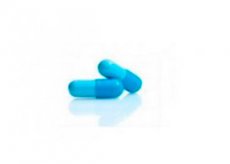Medical expert of the article
New publications
Preparations
Hepalin
Last reviewed: 03.07.2025

All iLive content is medically reviewed or fact checked to ensure as much factual accuracy as possible.
We have strict sourcing guidelines and only link to reputable media sites, academic research institutions and, whenever possible, medically peer reviewed studies. Note that the numbers in parentheses ([1], [2], etc.) are clickable links to these studies.
If you feel that any of our content is inaccurate, out-of-date, or otherwise questionable, please select it and press Ctrl + Enter.

Hepalin is a drug with hepatotropic properties.
Indications Hepaline
It is used for the following disorders:
- fatty liver infiltration;
- chronic hepatitis of various origins;
- disruption of biliary activity ( dyskinesia in the gallbladder area, which has a hypotonic form);
- IBS accompanied by constipation;
- therapy and prevention of the development of anorexia associated with stress, illness and other negative factors.
Release form
The substance is released in the form of syrup, in 0.2 l bottles.
Pharmacodynamics
Choline citrate effectively and quickly restores choline levels in the body, and at the same time improves magnesium absorption processes. It is a component of phospholipids and is involved in most biological processes. Choline is also included (as a main element) in the polar category of phosphatidylcholine (this component helps maintain the integrity of cell walls). In addition, the substance is the main component of another membrane phospholipid - a component of sphingomyelin, which is also involved in the processes of maintaining cell structure.
Sorbitol is necessary in cases where additional energy is urgently needed. The second part of the substance in the form of glycogen is deposited as a reserve. Isotonic liquid from sorbitol has a disaggregant effect, due to which it improves tissue perfusion together with microcirculation.
Pharmacokinetics
Choline citrate is absorbed in the small intestine. A small portion of the drug undergoes intrahepatic metabolism, resulting in the formation of components trimethylamine and betaine. Choline accumulates in all tissues of the body. Excretion occurs through the kidneys.
Sorbitol is quickly included in the general metabolic processes occurring within the body. 80-90% of the substance is utilized within the liver, and accumulation occurs in the form of glycogen.
Dosing and administration
For maintenance treatment in case of disorders in the functioning of the digestive or hepatobiliary organs, as well as the liver:
- adolescents over 14 years of age and adults should take 2 teaspoons of the medicine (10 ml), which are first dissolved in plain water. The medicine should be taken before lunch;
- Children aged 3-8 years are prescribed 1 teaspoon of the medicine (5 ml);
- Children aged 9-13 years are required to take 2 teaspoons of the medicine (10 ml).
Use of the drug in constipation:
- persons over 14 years of age - 2-4 teaspoons of the medicine (10-20 ml), which are dissolved in 1 glass of plain water. The substance should be consumed before breakfast in the morning;
- children aged 3-8 years – take 1 teaspoon of the substance (5 ml);
- Children aged 9-13 years – use 2 teaspoons of syrup (10 ml).
The duration of the therapeutic cycle is determined by the nature of the pathology and the effectiveness of the treatment.
Use Hepaline during pregnancy
The drug is not prescribed to nursing mothers and pregnant women.
Contraindications
Main contraindications:
- severe intolerance to the components of the drug;
- cerebral hemorrhage or alkalosis;
- thromboembolism;
- decompensation affecting the functioning of the cardiovascular system;
- increased blood pressure in stage 3.
Side effects Hepaline
The use of Hepalin may lead to the appearance of symptoms of alkalosis. Dyspeptic symptoms develop rarely: diarrhea with nausea and gastric disorders.
Use of large doses of the substance may lead to a decrease in blood pressure and the development of hyperhidrosis; sometimes the development of depression has been observed.
Overdose
In case of intoxication, signs of alkalosis may develop. In such a case, it is necessary to immediately stop using the drug. During treatment, procedures are carried out that regulate acid-base indicators.
Storage conditions
Hepalin should be kept in a place closed to small children. Temperature marks – within 25°С.
 [ 3 ]
[ 3 ]
Shelf life
Hepalin can be used within 36 months from the date of manufacture of the medicinal substance.
Application for children
Hepalin should not be used to treat children under 3 years of age.
Analogues
The analogues of the drug are Essentiale N, Hepel, Livolact and Essentiale Forte N with Esavit and Antral, as well as Hepel N, Phosphogliv and Bicyclol.
Attention!
To simplify the perception of information, this instruction for use of the drug "Hepalin" translated and presented in a special form on the basis of the official instructions for medical use of the drug. Before use read the annotation that came directly to medicines.
Description provided for informational purposes and is not a guide to self-healing. The need for this drug, the purpose of the treatment regimen, methods and dose of the drug is determined solely by the attending physician. Self-medication is dangerous for your health.

